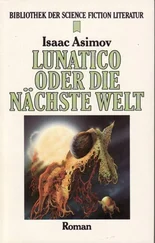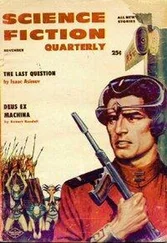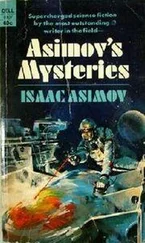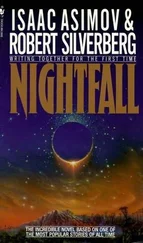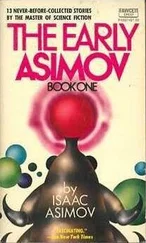“Yes,” Simbron put in—she was a cosmographer—“and we can also figure out whether it’s approaching or heading away from us. Gods! What if it’s heading this way? What an amazing event that would be! A dark planetary body cutting across the sky—passing between us and the suns! Possibly even blotting out the light of some of them for a couple of hours!”
“How strange that would be,” Beenay mused. “An eclipse, I suppose you could call it. You know: the visual effect that occurs when some object gets between a viewer and the thing he’s looking at. But could it happen? The suns are so huge—how could Kalgash Two actually conceal one of them from view?”
“If it came close enough to us it might,” Faro said. “Why, I could imagine a situation in which—”
“Yes, work out all possible scenarios, why don’t you?” Athor interjected suddenly, cutting Faro off with such brutal abruptness that everyone in the room turned to stare at him. “Play with the idea, all of you. Push it this way and that, and see what you get.”
Suddenly he couldn’t bear to sit here any longer. He had to get away.
The exhilaration he had felt since putting the last piece into place had abruptly deserted him. He felt a terrible leaden weariness, as though he were a thousand years old. Chills were running along his arms down into his fingers, and something was squirming frantically in the muscles of his back. He knew that he had pushed himself beyond all endurance now. It was time for younger workers to relieve him of this enterprise.
Rising from his chair before the screens, Athor took one uncertain reeling step toward the middle of the room, recovered himself before he could stumble, and walked slowly and with all the dignity he could muster past the Observatory staff. “I’m going home,” he said. “I could use some sleep.”
Beenay said, “Am I to understand that the village was destroyed by fire nine times in a row , Siferra? And they rebuilt it every time?”
“My colleague Balik thinks there may be only seven villages piled up in the Hill of Thombo,” the archaeologist replied. “And he may be right, actually. Things are pretty jumbled down toward the lowest levels. But seven villages, nine villages—no matter how many it is exactly, it doesn’t change the fundamental concept. Here: look at these charts. I’ve worked them up from my excavation notes. Of course what we did was just a preliminary dig, a quick slice through the whole hill, with the really meticulous work left for a later expedition. We discovered the hill too late in our work to do anything else. But these charts’ll give you an idea.—You aren’t going to be bored, are you? All this stuff does interest you, doesn’t it, Beenay?”
“I find it completely fascinating. Do you think I’m so totally preoccupied with astronomy that I can’t pay attention to any of the other disciplines?—Besides, archaeology and astronomy sometimes go hand in hand. We’ve learned more than a little about the movements of the suns through the heavens by studying the ancient astronomical monuments that you people have been digging up here and there around the world. Here, let me see.”
They were in Siferra’s office. She had asked Beenay to come there to discuss a problem which she said had unexpectedly arisen in the course of her research. Which puzzled him, because he didn’t immediately see how an astronomer could help an archaeologist in her work, despite what he had just said about archaeology and astronomy sometimes going hand in hand. But he was always glad to have a chance to visit with Siferra.
They had met initially five years before, when they were working together on an interdisciplinary faculty committee that was planning the expansion of the university library. Though Siferra had been out of the country most of the time since then doing field work, she and Beenay did enjoy meeting for lunch now and then when she was there. He found her challenging, highly intelligent, and abrasive in a refreshing sort of way. What she saw in him he had no idea: perhaps just an intellectually stimulating young man who wasn’t involved in the poisonous rivalries and feuds of her own field and had no apparent designs on her body.
Siferra unfolded the charts, huge sheets of thin parchment-like paper on which complex, elegant diagrams had been ruled with pencil, and she and Beenay bent forward to examine them at close range.
He had been telling the truth when he said he was fascinated by archaeology. Ever since he’d been a boy, he had enjoyed reading the narratives of the great explorers of antiquity, such men as Marpin, Shelbik, and of course Galdo 221. He found the remote past nearly as exciting to think about as the remote reaches of interstellar space.
His contract-mate Raissta wasn’t greatly pleased by his friendship with Siferra. She had rather testily implied, a couple of times, that it was Siferra herself who fascinated him, not her field of research. But Beenay thought Raissta’s jealousy was absurd. Certainly Siferra was an attractive woman—it would be disingenuous to pretend otherwise—but she was relentlessly non-romantic and every man on campus knew it. Besides, she was something like ten years older than Beenay. Handsome as she was, Beenay had never thought of her with any sort of intimate intentions.
“What we have here, first, is a cross section of the entire hill,” Siferra told him. “I’ve plotted each separate level of occupation in a schematic way. The newest settlement’s at the top, naturally—huge stone walls, what we call the cyclopean style of architecture, typical of the Beklimot culture in its mature period of development. This line here in the level of the cyclopean walls represents a layer of charcoal remains—enough charcoal to indicate a widespread conflagration that must have utterly wiped the city out. And here, below the cyclopean level and the burn line, is the next oldest settlement.”
“Which is constructed in a different style.”
“Exactly. You see how I’ve drawn the stones of the walls? It’s what we call the crosshatch style, characteristic of the early Beklimot culture, or perhaps the culture that developed into Beklimot. Both these styles can be seen in the Beklimot-era ruins that surround the Hill of Thombo. The main ruins are cyclopean, and here and there we’ve found a little crosshatch stuff, just a mere outcropping or two, which we call proto-Beklimot. Now, look here, at the border between the cross-hatch settlement and the cyclopean ruins above it.”
“Another fire line?” Beenay said.
“Another fire line, yes. What we have in this hill is like a sandwich—a layer of human occupation, a layer of charcoal, another layer of human occupation, another layer of charcoal. So what I think happened is something like this. During the time of the crosshatch people there was a devastating fire that scorched a pretty good chunk of the Sagikan Peninsula and forced the abandonment of the Thombo village and other crosshatch-style villages nearby. Afterward, when the inhabitants came back and began to rebuild, they used a brand-new and more elaborate architectural style, which we call cyclopean because of the huge building-stones. But then came another fire and wiped out the cyclopean settlement. At that point the people of the area gave up trying to build cities on the Hill of Thombo and this time when they rebuilt they chose another site nearby, which we term Beklimot Major. We’ve believed for a long time that Beklimot Major was the first true human city, emerging from the smaller crosshatch-type proto-Beklimot-period settlements scattered all around it. What Thombo tells us is that there was at least one important cyclopean city in the area before Beklimot Major existed.”
Читать дальше


